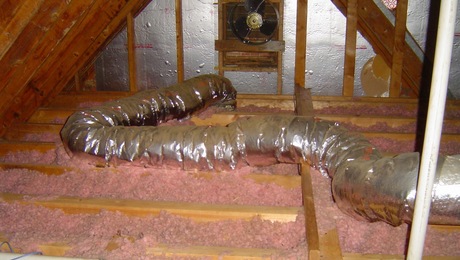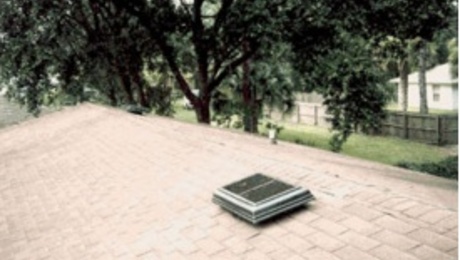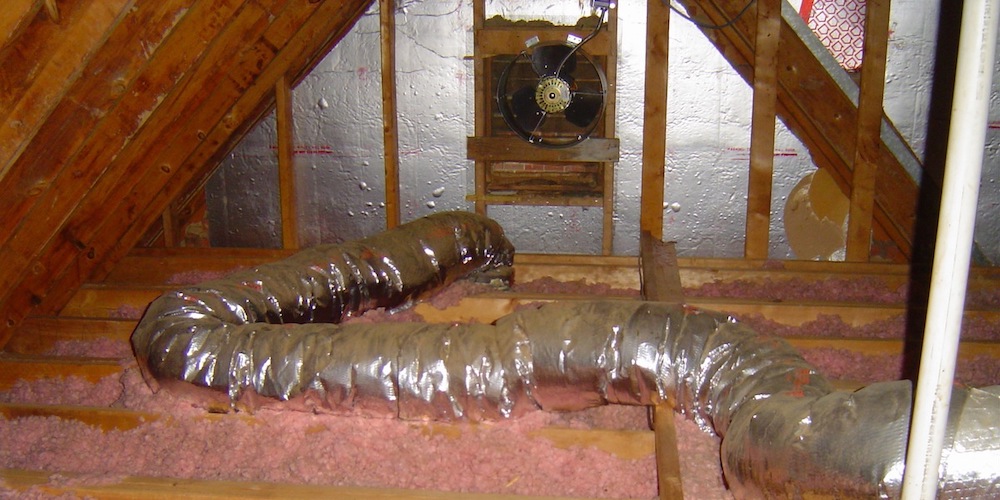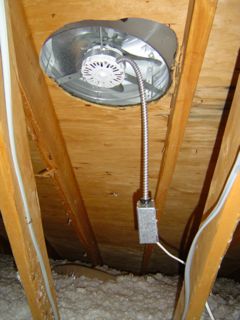We have a large (36x36) gable vent fan installed in our walk-up attic. It was part of a whole-house fan setup whereby a timer switch (kind of like what you see on jetted tubs) in the upstairs hallway controlled both an electrically operated louver in the hallway ceiling and the fan. When you turn the timer on the louvers open and the fan (located on the other side of the house) starts up, pulling air from the house, up into the attic, and out the gable vent. The previous owner lived here for 20 years with that being the only summer climate control. We've since installed mini-splits as the whole house function is nice, but only on days when the humidity is low, which is hardly ever. Right now I have the louver covered with a fitted 2x2 sheet of plywood that is meant to seal it up in the wintertime. I've been running the fan to try to keep the attic cool since I figure it reduces the heat load on the 2nd floor some. In theory even though the hallway ceiling is sealed up, the draw created by the gable vent fan should be pulling in fresh air through the soffits which are the standard perforated vinyl type. Each rafter bay has the little styrofoam lunch tray-looking things which keep the insulation from blocking the airflow from the soffits. There are also two passive roof vents similar to these installed:
![[Hearth.com] Attic Fan Usage? [Hearth.com] Attic Fan Usage?](https://www.hearth.com/talk/data/attachments/261/261731-4611b556982ee342ab95bd2d04214cce.jpg?hash=PbF9A4YqY3)
So is it a good idea to run the roof fan in the summer to take some load off of the AC? If so, I will remove the electrically actuated louver, patch the hole, insulate the void and permanently install plywood overtop. I would also look into eliminating the manual control altogether and install some kind of thermostatic control to kick the fan on anytime the attic rises about 90°F.
![[Hearth.com] Attic Fan Usage? [Hearth.com] Attic Fan Usage?](https://www.hearth.com/talk/data/attachments/261/261731-4611b556982ee342ab95bd2d04214cce.jpg?hash=PbF9A4YqY3)
So is it a good idea to run the roof fan in the summer to take some load off of the AC? If so, I will remove the electrically actuated louver, patch the hole, insulate the void and permanently install plywood overtop. I would also look into eliminating the manual control altogether and install some kind of thermostatic control to kick the fan on anytime the attic rises about 90°F.






